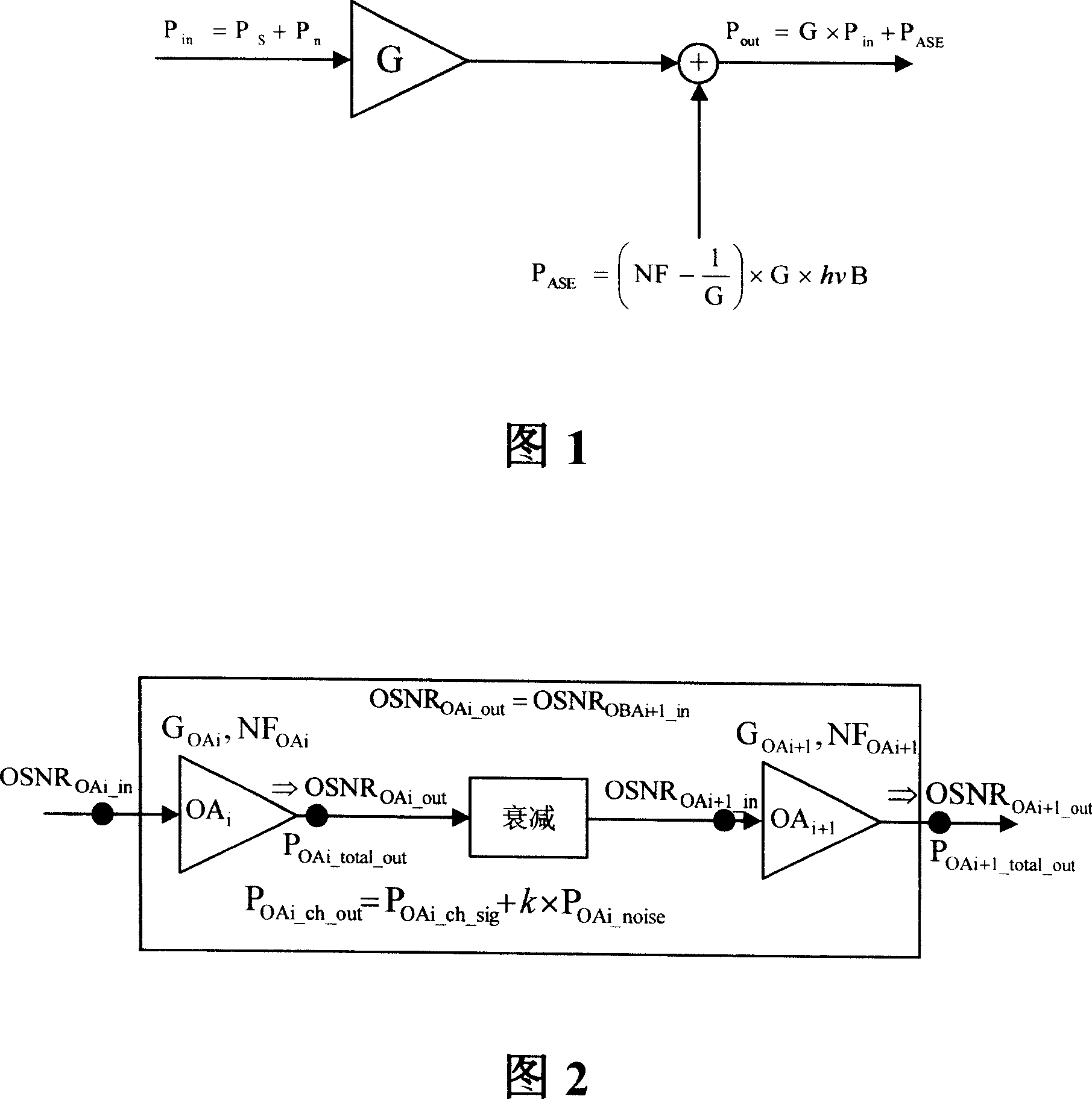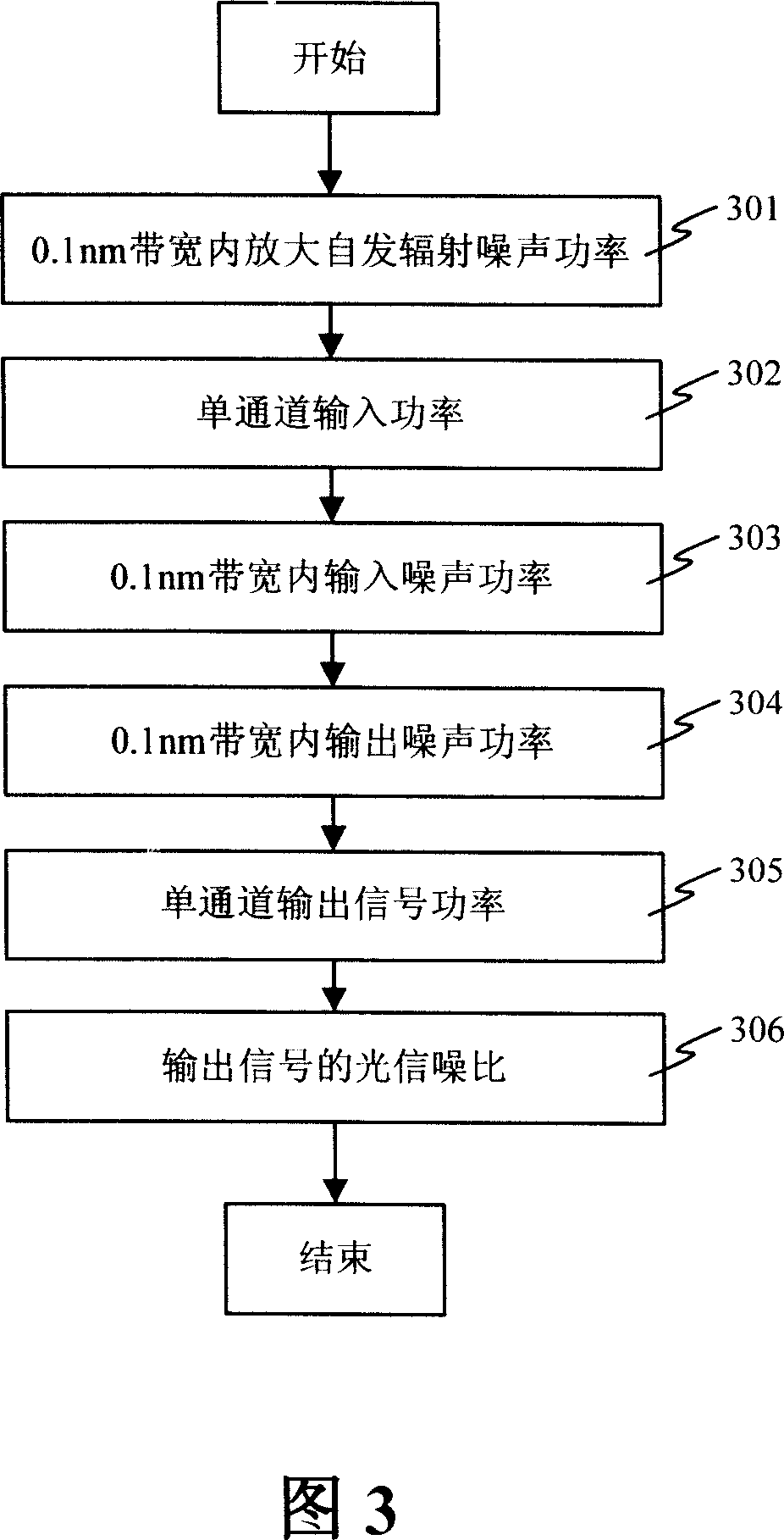A method for obtaining DWDM system optical S/N ratio
An optical signal-to-noise ratio and optical amplifier technology, applied in the field of optical transmission, can solve the problems of low signal-to-noise ratio systems, inability to adapt to non-equidistant systems, and uneven transmission of optical power across segments, and achieve the effect of improving accuracy
- Summary
- Abstract
- Description
- Claims
- Application Information
AI Technical Summary
Problems solved by technology
Method used
Image
Examples
Embodiment Construction
[0031] Please refer to FIG. 2 , which is a block diagram of the method for obtaining the system output optical signal-to-noise ratio in the present invention. The present invention obtains the optical signal-to-noise ratio of the OA output signal in the system step by step, and the output optical signal-to-noise ratio of the upper-level OA is used as the input optical signal-to-noise ratio of the next-level OA, and the input power of the OA and the noise power in the output power are considered. accounted for. The OA can be an optical amplifier based on EDFA, DRA, SOA or other technical solutions.
[0032] Please refer to FIG. 3 , which is a flowchart of a method for obtaining an output optical signal-to-noise ratio of a single-stage OA in the present invention. This figure takes the C-band 40-wave DWDM system as an example to describe the method for accurately obtaining the system's optical signal-to-noise ratio. For convenience of description, all parameters below are in l...
PUM
 Login to View More
Login to View More Abstract
Description
Claims
Application Information
 Login to View More
Login to View More - R&D
- Intellectual Property
- Life Sciences
- Materials
- Tech Scout
- Unparalleled Data Quality
- Higher Quality Content
- 60% Fewer Hallucinations
Browse by: Latest US Patents, China's latest patents, Technical Efficacy Thesaurus, Application Domain, Technology Topic, Popular Technical Reports.
© 2025 PatSnap. All rights reserved.Legal|Privacy policy|Modern Slavery Act Transparency Statement|Sitemap|About US| Contact US: help@patsnap.com



